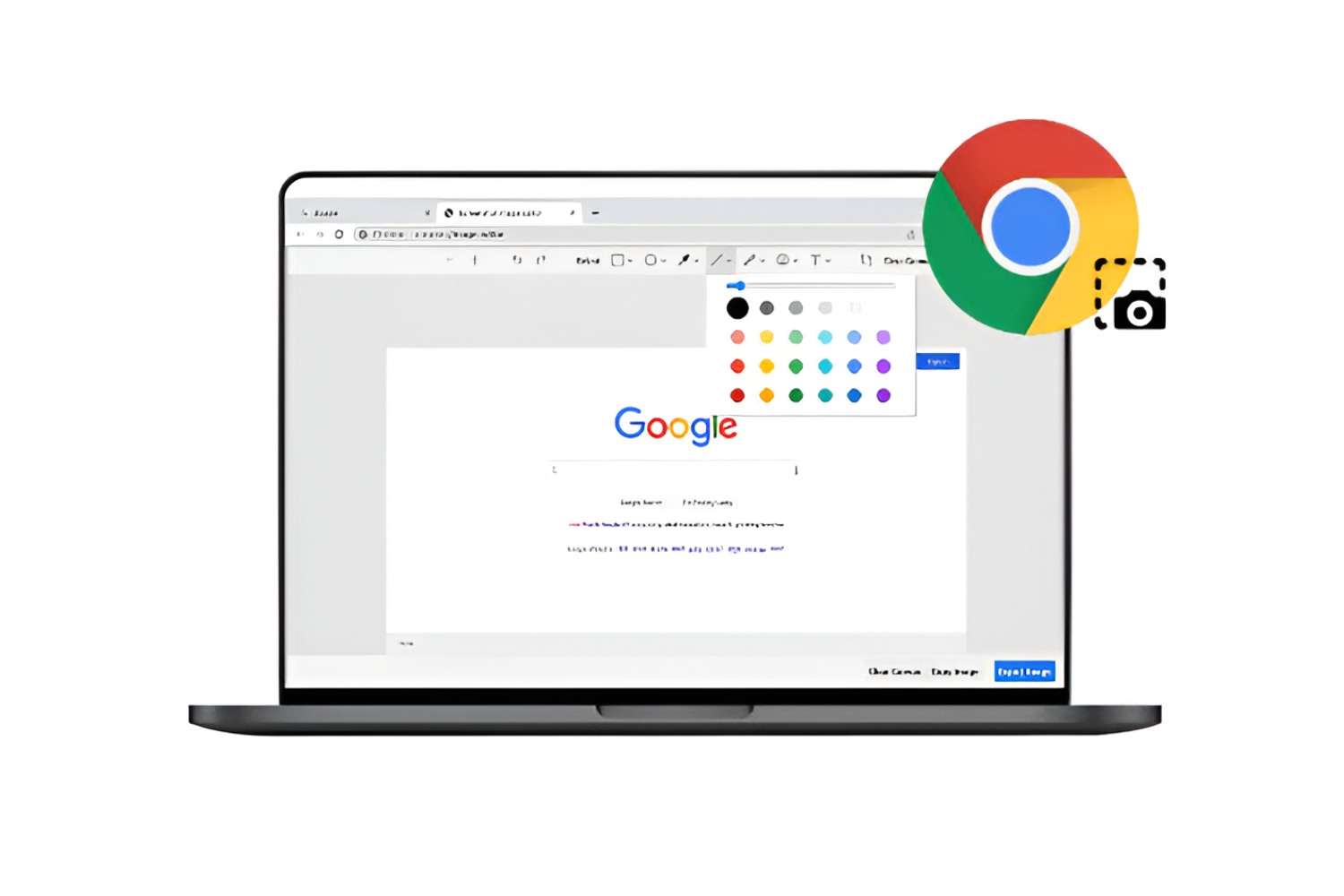Introduction
When it comes to web browsing, Google Chrome stands out as a popular choice for its speed, user-friendly interface, and extensive range of extensions. Among the many features that make Chrome a preferred browser, Native Client, often abbreviated as NaCl, is a noteworthy component that enhances the browser's capabilities. Native Client is a sandboxing technology that allows the execution of native machine code within a web browser in a secure manner. This innovative technology opens up a world of possibilities for web applications, enabling them to harness the power of native code while maintaining the security and portability of web applications.
Native Client has garnered attention for its ability to bridge the gap between web applications and native code, offering a seamless integration that enhances the performance and functionality of web-based software. As we delve deeper into the intricacies of Native Client, we will explore its inner workings, advantages, and potential drawbacks, shedding light on its impact on the browsing experience and the broader landscape of web development. Let's embark on a journey to unravel the mysteries of Native Client and understand its role in shaping the future of web browsing and application development.
What Is Native Client?
Native Client, commonly referred to as NaCl, is a sandboxing technology developed by Google that enables the execution of native machine code within a web browser. This innovative technology serves as a bridge between web applications and native code, allowing developers to leverage the performance benefits of native code while maintaining the security and portability of web applications.
At its core, Native Client provides a secure environment for running native code in the browser, mitigating the inherent security risks associated with executing untrusted code from the web. By utilizing a combination of software-based fault isolation and a secure runtime environment, Native Client ensures that native code can be executed safely within the browser without compromising the integrity of the user's system.
One of the key features of Native Client is its support for multiple architectures, including x86, x86-64, ARM, and MIPS, making it a versatile solution for running native code across different platforms and devices. This cross-platform compatibility enhances the reach and applicability of Native Client, enabling developers to create web applications that can harness the power of native code on a wide range of devices and operating systems.
Furthermore, Native Client integrates seamlessly with web browsers, providing a transparent interface for executing native code within the context of a web application. This integration eliminates the need for external plugins or extensions, streamlining the deployment and execution of native code within the browser environment.
In essence, Native Client empowers developers to push the boundaries of web application development by incorporating native code to enhance performance, enable complex computations, and unlock new possibilities for interactive and immersive web experiences. As a result, Native Client has emerged as a valuable tool for expanding the capabilities of web applications and driving innovation in the realm of web development.
In the next section, we will delve into the inner workings of Native Client and explore how it operates within the Chrome browser, shedding light on the mechanisms that enable the seamless execution of native code in a secure and controlled manner.
How Native Client Works in Chrome
Native Client operates within the Chrome browser as a crucial component that facilitates the execution of native machine code within the web environment. At its core, Native Client leverages a combination of innovative techniques to ensure the secure and efficient execution of native code, enabling web applications to harness the power of native code while maintaining a high level of security and portability.
Integration with Chrome
Native Client seamlessly integrates with the Chrome browser, providing a transparent interface for executing native code within the context of web applications. This integration eliminates the need for external plugins or extensions, streamlining the deployment and execution of native code within the browser environment. By leveraging the built-in capabilities of Chrome, Native Client ensures a seamless and consistent experience for users and developers alike.
Software-Based Fault Isolation
One of the key mechanisms employed by Native Client is software-based fault isolation, which serves as a critical layer of defense against potential security vulnerabilities. This technique involves isolating the execution of native code within a secure sandbox, preventing it from accessing unauthorized resources or compromising the integrity of the user's system. By confining the native code within a controlled environment, Native Client mitigates the risks associated with executing untrusted code from the web, thereby enhancing the overall security of web applications.
Secure Runtime Environment
Native Client incorporates a secure runtime environment that provides the necessary infrastructure for executing native code within the browser. This runtime environment is designed to enforce strict security policies, validate the integrity of native code modules, and ensure that the execution remains isolated from other components of the browser. By establishing a secure runtime environment, Native Client creates a safe and controlled environment for running native code, minimizing the potential impact of security threats and vulnerabilities.
Cross-Platform Compatibility
Another notable aspect of Native Client's operation in Chrome is its support for multiple architectures, including x86, x86-64, ARM, and MIPS. This cross-platform compatibility enables web applications to leverage native code across a diverse range of devices and operating systems, expanding the reach and applicability of Native Client. By accommodating different architectures, Native Client empowers developers to create web applications that can harness the performance benefits of native code on various platforms, enhancing the versatility and accessibility of web-based software.
In essence, Native Client works in tandem with Chrome to provide a secure and efficient platform for executing native code within web applications. By integrating seamlessly with the browser, employing software-based fault isolation, establishing a secure runtime environment, and supporting cross-platform compatibility, Native Client enhances the capabilities of web applications while upholding the principles of security and portability. This seamless integration of native code within the web environment opens up new possibilities for web application development, paving the way for enhanced performance, interactivity, and innovation.
Advantages of Using Native Client
Native Client offers a myriad of advantages that significantly enhance the capabilities of web applications and contribute to the overall browsing experience. By leveraging the power of native code within the web environment, Native Client introduces a host of benefits that cater to developers, users, and the broader landscape of web development.
Enhanced Performance
One of the primary advantages of using Native Client is its ability to unlock enhanced performance for web applications. By allowing the execution of native machine code within the browser, Native Client empowers developers to optimize performance-critical components of their applications, such as computational algorithms, multimedia processing, and real-time interactions. This enhanced performance translates to smoother user experiences, faster load times, and the ability to handle complex tasks with efficiency, ultimately raising the bar for web application performance.
Access to Native Libraries and APIs
Native Client enables web applications to tap into a rich ecosystem of native libraries and APIs, expanding the scope of functionality and capabilities available to developers. By interfacing with native code, web applications can leverage existing libraries for tasks such as graphics rendering, audio processing, cryptography, and more. This seamless integration with native libraries and APIs empowers developers to harness a wealth of resources and functionalities, enriching the feature set and potential applications of web-based software.
Cross-Platform Compatibility
Another notable advantage of Native Client is its cross-platform compatibility, which allows web applications to harness the power of native code across diverse architectures and operating systems. This versatility enables developers to create web applications that can deliver consistent performance and functionality across a wide range of devices, including desktops, laptops, mobile devices, and embedded systems. By transcending platform limitations, Native Client fosters a unified experience for users, regardless of the devices they use to access web applications.
Security and Isolation
Native Client prioritizes security by employing software-based fault isolation and a secure runtime environment to mitigate the risks associated with executing native code within the browser. This approach ensures that native code operates within a controlled sandbox, preventing unauthorized access to system resources and safeguarding the integrity of the user's device. By upholding stringent security measures, Native Client instills confidence in users and developers, fostering a secure environment for the execution of native code in web applications.
Innovation and Performance-Critical Applications
The integration of native code through Native Client opens up new frontiers for innovation in web application development. It enables the creation of performance-critical applications that demand the efficiency and power of native code, such as advanced gaming experiences, real-time simulations, complex data processing, and more. This capability fuels creativity and pushes the boundaries of what web applications can achieve, paving the way for immersive and interactive experiences that were previously constrained by the limitations of traditional web technologies.
In summary, the advantages of using Native Client encompass enhanced performance, access to native libraries and APIs, cross-platform compatibility, security and isolation, and the facilitation of innovation and performance-critical applications. These advantages collectively contribute to a richer and more dynamic landscape for web application development, empowering developers to create high-performance, feature-rich applications that resonate with users across diverse platforms and use cases.
Disadvantages of Using Native Client
While Native Client offers a host of advantages that elevate the capabilities of web applications, it is important to acknowledge the potential drawbacks associated with its utilization. Understanding the limitations of Native Client is essential for developers and users alike, as it provides valuable insights into the considerations and trade-offs involved in leveraging native code within the web environment.
Limited Browser Support
One of the primary disadvantages of using Native Client is its limited support across different web browsers. As of now, Native Client is primarily tailored for integration with the Chrome browser, which may restrict its applicability for users who prefer alternative browsers. This limitation poses a challenge for developers aiming to create web applications with broad compatibility, as they may need to consider alternative solutions to ensure consistent performance and functionality across diverse browser environments.
Complexity of Native Code Integration
Integrating native code into web applications through Native Client introduces a level of complexity that may pose challenges for developers, particularly those who are accustomed to traditional web development paradigms. The process of adapting and optimizing native code for execution within the browser environment requires specialized knowledge and expertise, which may present a barrier for developers who are not well-versed in native code development. This complexity can potentially hinder the adoption of Native Client for web application development, especially for teams with limited experience in native code integration.
Security Considerations
While Native Client prioritizes security through software-based fault isolation and a secure runtime environment, the execution of native code within the browser introduces inherent security considerations. Despite the robust security measures implemented by Native Client, the integration of native code inherently introduces a level of risk, as it involves executing code that is not inherently native to the web environment. Developers and users must remain vigilant about potential security vulnerabilities and adhere to best practices for secure coding and deployment when leveraging Native Client for web applications.
Performance Overhead
The execution of native code within the browser environment through Native Client may introduce a performance overhead, particularly in scenarios where complex computations or resource-intensive tasks are involved. While Native Client aims to enhance performance, the overhead associated with integrating and executing native code within the web environment may impact the overall responsiveness and efficiency of web applications. Developers need to carefully assess the trade-offs between performance gains and potential overhead when considering the adoption of Native Client for their projects.
Platform-Specific Considerations
Despite its cross-platform compatibility, Native Client may introduce platform-specific considerations that need to be addressed by developers. Ensuring consistent performance and functionality across diverse architectures and operating systems requires meticulous testing and optimization, which adds complexity to the development and maintenance of web applications leveraging Native Client. Developers must navigate the nuances of different platforms to deliver a seamless experience for users, which can pose challenges in terms of resource allocation and compatibility testing.
In essence, while Native Client offers compelling advantages for web application development, it is essential to recognize the potential disadvantages associated with its utilization. By acknowledging the limitations and considerations involved in leveraging native code within the web environment, developers can make informed decisions about the suitability of Native Client for their projects and navigate the complexities and trade-offs inherent in integrating native code into web applications.
Conclusion
In conclusion, Native Client represents a groundbreaking advancement in web technology, offering a gateway to seamlessly integrate native code within the web environment. Its ability to bridge the gap between web applications and native code opens up a world of possibilities for developers, empowering them to create high-performance, feature-rich applications that resonate with users across diverse platforms and use cases.
The seamless integration of Native Client with the Chrome browser, coupled with its support for multiple architectures and robust security measures, positions it as a valuable tool for driving innovation in web application development. By unlocking enhanced performance, access to native libraries and APIs, and cross-platform compatibility, Native Client paves the way for a richer and more dynamic landscape for web applications.
However, it is important to approach the adoption of Native Client with a comprehensive understanding of its potential limitations, including browser support constraints, the complexity of native code integration, security considerations, performance overhead, and platform-specific nuances. By acknowledging these considerations, developers can make informed decisions about leveraging Native Client for their projects and navigate the complexities and trade-offs inherent in integrating native code into web applications.
As the web development landscape continues to evolve, Native Client stands as a testament to the ongoing pursuit of innovation and performance optimization within the web environment. Its impact extends beyond individual applications, shaping the broader trajectory of web technology and inspiring new possibilities for immersive, interactive, and efficient web experiences.
In essence, Native Client embodies the spirit of pushing boundaries and redefining the capabilities of web applications, serving as a catalyst for creativity, performance, and security in the ever-evolving realm of web development. As developers continue to explore the potential of Native Client and its integration with web applications, it is poised to play a pivotal role in shaping the future of web technology, driving progress, and unlocking new frontiers of innovation and user experiences.

























